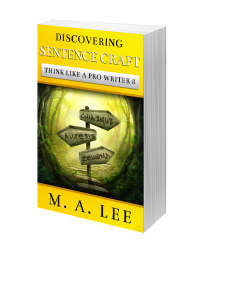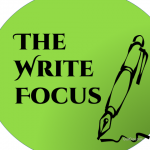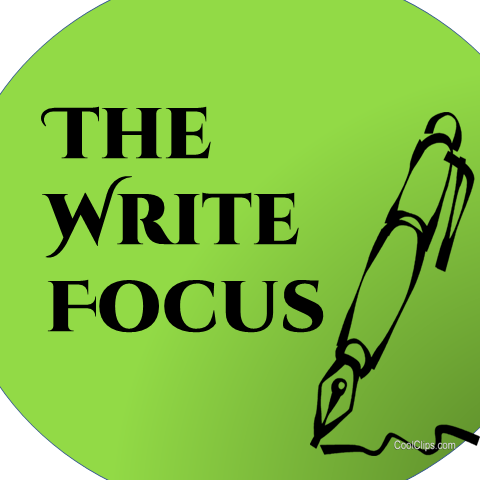We’re working through M.A. Lee’s guidebook Discovering Sentence Craft.
Our focus : the special writing skills that we can learn and practice then apply in our next manuscript, using a light paintbrush. Revision with Enhancements makes our writing better.
in our next manuscript, using a light paintbrush. Revision with Enhancements makes our writing better.
The Enhancement series divides our practice into concepts and schema or ideas and structure or figurative language and rhetorical devices.
- Figurative :: simile/metaphor/personification plus 6 more types
- Interpretive :: allusions, archetypes, motifs, allegory
- Inversion :: including anastrophe (Yoda speech) and chiasmus (my fav!)
- Repetition :: simple and incremental, alliteration and more
- Opposition :: dichotomies / juxtapositions like antithesis and oxymoron, irony and satire
- Sequential :: ordering for intensification / auxesis, anticlimax, and parallelism like the isocolon.
Direct links to episodes become active on the day of the broadcast.
We are available from Apple to YouTube, Spotify and Podbean (my favs), Deezer and Podcaster, the rivals iHeart and Tune-in, and too many more to list.
Here are the 4 easiest:
My favorite podcast is Podbean. https://eden5695.podbean.com/
YouTube direct link to the Enhancements playlist: https://youtube.com/playlist?list=PLXi3M_aM-d7Iyaw3xDbgPAQrc1p8CG_Z7
Apple https://podcasts.apple.com/us/podcast/the-write-focus/id1546738740%20
Spotify https://open.spotify.com/show/4fMwknmfJhkJxQvaaLQ3Gm?si=0GFku2PbShWXiDhRp7JaDQhttps://eden5695.podbean.com/e/270-preptober-part-2-13-steps-for-dancing-part-1/?token=7b928fab89a35c042dcbfcdf2e206e4d
February 2 ~ Introduction
Apostrophes ~ no, not the mark of punctuation. It’s the literary term. Know what it is? How about paradox? Sure on that? Chiasmus: my favorite, people enjoy when they see it, but do you know the term when you want to practice it? Can I stump you with these? Polysyndeton. Epistrophe. These are all Enhancements that can help your writing sing on the page. That’s an implied metaphor, BTW.
Enhancements from anastrophes to zeugmas ~ the series starts with this episode.
- 02:25 Who needs word tricks?
- 05:18 Basic language information
- 07:00 The only rule to remember
- 08:25 Taste
- 10:20 Periodic vs. Cumulative (more of a grammar lesson than helpful to writers)
- 13:40 Denotation vs. Connotation
- 16:40 Practice Connotation
- 16:53 Next Week
- 17:13 Inspiration / Charles Lamb
February 9 ~ Figurative Language, part 1
Similes: easy enough. Metaphors: also easy. Direct Metaphor: just like a simile. Implied Metaphor: now we’re getting complex. Hyperbole: easy again. Great for insults.
How about metonymy and Synecdoche?
“Wait, I know these,” you say. “Let me remember. I haven’t heard them since high school. Metonymy’s when a part of something represents the whole. Oh, that’s synecdoche. I don’t remember metonymy.
Don’t stress. This episode of The Write Focus will help.
Examples from poetry, novels and speeches.
- · 04:10 Comparison Equations
· 07:42 Simile
· 11:35 Metaphor
· 14:05 Simile vs. Metaphor
· 16:15 Metonymy
· 17:25 Synecdoche
· 19:52 Hyperbole
· 22:49 Next Week
· 23:09 Inspiration
February 16 ~ Figurative Language, part 2
A love of words. A love of what we writers can do with words. We can tell an engrossing story and create characters that we love and that we love to hate. We can make our readers cry and laugh. We can persuade and win points or write an angry tirade for our soapbox of choice. We can play with words, language acrobatics, jumping words through fiery hoops and tumbling and backflips.
And compelling writing at the sentence level starts with comparisons, with figurative language.
Want to improve your sentence craft? This episode can help.
Samples from poetry, novels, and speeches with extended poem excerpts or entireties listed below. (Is that a word?)
- 1:20 Check-In
· 6:23 Extended Metaphor
- o Edna St. Vincent Millay’s “First Fig”
- 8:10 Metaphysical Conceit
- o John Donne’s “A Valediction: Forbidding Mourning” (excerpt)
- o William Shakespeare’s “All the World’s a Stage”
- 14:50 Litotes
- o Robert Frost’s “Fire and Ice”
- 18:43 Personification
- o Robert Frost’s “My November Guest”
- 23:07 Anthropomorphism
· 24:20 the literary Apostrophe
- o John Donne’s Holy Sonnet 10
- 26:15 Next Episode
· 26:30 Inspiration / Tennessee Williams
What’s an easy and ingenuous way to elevate our writing to the next level? This way works down into the words we place on the page. In character descriptions. Setting development. Plot dynamics. It’s like a secret language that most readers don’t know about even as their subconscious recognizes that secret language. In many respects, this is global, recognized everywhere. If no one spots it—which is always good—this secret gives us writers a satisfactory glow every time we touch it onto the page.
What is this easy and ingenuous way to elevate our writing? Symbols.
- 1:16 Symbols: Realm of the Interpretive
- 4:13 5 Clues to Interpretation
- 4:48 symbols in Toni Cade Bambera’s “Blues Ain’t No Mockinbird”
- 5:39 bird symbols in James Hurst’s “The Scarlet Ibis”
- 7:19 symbols and allusions unlock additional knowledge
- 8:46 :: 1, 2, & 3
- 10:38 :: 4, 5, & 6
- 16:53 :: 7, 8, & 9
- 21:52 :: 10 & 11
- 24:09 :: 12 & 13
- 26:27 Using Symbolic Numbers
- 28:08 Next Week
- 28:20 Inspiration / Honoré de Balzac
Last week was a half-hour episode on Symbolic Numbers. This week we’re all about symbolic colors, and we have our regular length: long enough to fix a quick dinner, drive a short commute, or take a brisk walk.
We explain the 3 primaries red, blue, yellow; the neutrals black, white, grey; the metals silver and gold; and the vivid purple, green, and orange. Can’t leave out brown, the color of old sacrifice.
Join us for ways to enhance your writing by changing a single word.
It’s the Enhancement series, on The Write Focus.
- · 1:14 Symbolic Colors (and Times)
- · 3:19 Only 3 Colors in One Culture
- · 4:27 Robert Frost’s “The Road Not Taken”
- · 6:32 red / blue /white
- · 7:07 green / purple
- · 7:51 black / white / grey
- · 8:56 silver and gold
- · 9:46 orange and brown
- · 10:34 NC Wyeth’s painting of Arthur Receiving Excalibur
- · 12:12 F. Scott Fitzgerald’s The Great Gatsby
- · 12:44 Irene Hunt’s Across Five Aprils
- · 16:42 Symbolic Colors and Times questions
- · 17:31 Next Week
- · 17:51 Inspiration / Alfred Kazin
Special Links for this episode
The Road Not Taken by Robert Frost | Poetry Foundation
NC Wyeth 450px-Boyskingarthur-wyeth-excalibur-lady-of-the-lake.jpg (450×574) (summitlighthouse.org)
March 9 ~ Interpretive / Imagery
It’s the 100th episode. Time to Celebrate.
And
Besides symbolic colors and numbers, how else can we add single words and short phrases to enhance our writing? We’re delving into simple touches that we can add to stories and poems and novels AND nonfiction essays and blogs to enrich the text for our readers.
Key words here are simple touches. These carry a tremendous wealth of information.
By having several tools in our writers’ toolbox, we can layer our enhancements in with a light touch. With our previously discussed metaphors and other figures of speech, we dab in a color symbol or three, a number here and there. But we’ve barely explored the writer’s toolbox.
In this episode of The Write Focus, we offer another method to touch a highlight to our writing.
- · 1:30 Celebration
- · 2:30 Imagery
- · 3:00 Chiaroscuro in The Scarlet Letter
- · 4:34 Omar Khayyim’s Rubaiyat, translated by Edward Fitzgerald
- · 8:45 Emily Dickinson
- · 10:39 Tone / Mood / Atmosphere
- · 11:30 e.e. cummings’ “i carry your heart”
- 15:43 Next Week
- 16:00 Inspiration / William Shakespeare
March 16 ~ Interpretive / Archetpes and Allusions
Last episode I had a major oopsie. Almost finished recording three tools (imagery / archetype / allusion) for our Enhancement Writer’s Toolbox, and I realized the recording had approached 40 minutes. Quelle surprise!
Now I stumble over words and pause and take long breaths, but I know—know—that I wouldn’t have enough errors to lose 20 minutes. I can accept reaching 25 minutes. We’ve had a ½ hour episode, part 1 of Symbols (the numbers). But multiple ½ hour and more episodes? No. NO. That defeats The Write Focus’s stated length: time for a quick commute, brisk walk, or fast meal-prep.
The plan to cover imagery, archetype, and allusion in one episode was because all three contain a wealth of information in one word or phrase (a Herculean task).
Therefore, rather than run 40 minutes, I broke that planned episode into two.
- Ø Imagery last week
- Ø Archetype and Allusion this week
- Ø Finishing the Interpretive Realm with Allegory next week
- · 1:45 Archetype
- · 4:26 Shapes and Colors and Situations
- · 5:38 Allusions
- · 9:00 In Shakespeare’s Romeo and Juliet
- · 11:40 Classical Mythology common allusions
- · 12:09 Old and New Testament common allusions
- · 12:52 Bordon Deal’s “Antaeus”
- · 15:46 Next Week
- · 16:08Inspiration / Natalia Ginzberg
Special Links
Emily Dickinson ~ both versions of “I Never Saw a Moor” https://allpoetry.com/I-Never-Saw-a-Moor
e.e. cummings ~ “i carry your heart” https://www.poetryfoundation.org/poetrymagazine/poems/49493/i-carry-your-heart-with-mei-carry-it-in
March 23 ~ Interpretive / Allegories part 1
A Relatively Short Episode at 12 minutes
Ever heard a story, and just know, know that something extra is also part of the story? Not hidden bits and pieces but a whole narrative?
A top story is running along, but another story runs underneath the surface, occasionally poking up the periscope for a look around before re-submerging so it can run silent, run deep? (Yep, that’s an allusion to the famous submarine movie.)
That submerged story, it’s an allegory, and the allegory occurs more often than we would imagine.
How do we craft our allegories? This episode can help.
- · 1:18 Allegory
- · 3:01 Parables as Allegories
- · 6:23 George Orwell’s Animal Farm
- · 7:21 Jack London’s Call of the Wild
- · 10:04 Next Week
- · 10:31 Inspiration / Francois Mauriac
March 30 ~ Interpretive / Allegories part 2
Mystical wanderer. Dark desert highway. A ragged prince who turns into a toad. The beast of fame that cannot be killed.
Recognize these images? Yep, it’s Carole King’s “Tapestry”, a riddling allegory that questions more than it answers, and “Hotel California” by the Eagers, another allegory of Fame and the goddess Fortuna.
“Hotel California” has a classical music connection to Carl Orff’s “O, Fortuna.” Now that’s a surprise.
These chart-topping songs are the focus for Allegories, part 2. Come along as we explore the songs and their allegories and discover how to craft an allegory in our own writing.
- · 1:23 Check-In
- · 2:10 Carole King’s “Tapestry”
- · 10:04 Carl Orff’s “O, Fortuna”
- · 11:00 The Eagles’ “Hotel California”
- · 18:23 Next Week
- · 18:52 Inspiration / James Baldwin
Special Links
Carole King – Tapestry Lyrics | AZLyrics.com
Carole King performing “Tapestry” with images https://youtu.be/LUWIwhhxyDM
Eagles – Hotel California Lyrics | AZLyrics.com
Eagles’ live performance https://youtu.be/l4Cb9Hj1WZM
Lyrics to O Fortuna | Latin and English (had2know.org)
Andre Rieu conducting a performance of “O Fortuna” André Rieu – O Fortuna (Carmina Burana – Carl Orff) – Bing video
April 6 Inversion / Words Out of Natural Order
“Always in motion is the future.”
Do you recognize that quotation? You may be able to because the words are out of natural order.
It’s Yoda!
No, we’re not going to talk about Yoda and the Star Wars franchise or laser swords.
Our focus for this episode is Words Out of Natural Order. That happens more often than we writers realize.
Inversion, switching up the natural order of words, is more than Yoda and a Zen-like character device that became a gimmick.
It’s recognizable, though, isn’t it?
How can we use Inversion to create our own writing—without becoming a gimmick? This episode of The Write Focus can help.
- · 1:18 Inversion: Simple Device or Gimmick?
- · 1:53 William Ernest Henley’s “Invictus”
- · 3:32 Subject Out of Position / 4 Subject Inversions
- · 9:22 Yoda Charm and Subtle Inversion (a/k/a Anastrophe)
- · 10:28 Emily Dickinson and Henley, again
- · 12:27 Chiasmus
- · 16:08 Closing / Next Week
- · 16:16 Inspiration / C. Day Lewis
For CHIASTIC STRUCTURE, which is too involved to hear (You have to SEE it), visit this link and look for the Chiastic Structure of the Iliad books.
April 13 / 3 Types of Repetition
“Tomorrow and tomorrow and tomorrow / Creeps in this petty pace from day to day.”
Why are we quoting the famous Macbeth speech by Shakespeare? It has two separate types of repetition. The 1st type is simple repetition with two instances. The 2nd type is a repetition of opening sounds.
In this episode we’re also going to talk about a third clever type of repetition.
Three types of repetition. Did you know repeating words is a proliferate writing technique? Like Guppies, words clone each other. Join our presentation of three simple ways to capture reader interest and curiosity.
- 1:32 Opening
- 2:56 Repetition has impact
- 3:12 repetition examples
- 4:03 George Gordon, Lord Byron: “We’ll Go no more A-Roving”
- 5:18 Incremental Repetition
- 5:32 Examples, including the “Lord Randall” ballad and William Stafford’s “Fifteen”
- 9:05 Joni Mitchell’s “Both Sides Now”
- 14:01 polysyndeton and anaphora
- 15:23 Alliteration
- 16:38 French Rhyme vs. English Rhyme
- 17:28 Old English poems
- 18:40 alliteration examples
- 20:45 Wilfred Owens’ “From my Diary, July 1914”
- 22:00 Next Week
- 22:10 Inspiration / R. Waldo Emerson
Special Links
Joni Mitchell – Both Sides Now Lyrics | AZLyrics.com
Judy Collins sings BSN with Arthur Fiedler’s Boston Pops as accompaniment
April 20 / More on Repetition
Repetition. We focused on simple repetition in the previous episode, from the riding, riding, riding of “The Highwayman” up to the old inn door to the clever use of incremental repetition, with “I’ve looked at cloud … and love … and life” in Joni Mitchell’s “Both Sides Now”, and to alliteration of “streaming rain, blinding sleet, stoned by hail, freezes the frost and fall the snow” from an Old English poem.
This time we look at the intricate types of repetition, to and fro, fast and slow, front and back, complicated but powerful. It’s Repetition, part 2.
- 0:58 Opening
- 1:07 Antistrophe
- 3:18 Epanalepsis
- 4:30 Amplification
- 5:23 Anadisplosis
- 6:46 Polysyndeton
- 7:53 Asyndeton
- 9:51 Anaphora
- 13:35 Epistrophe
- 17:20 Nest Week
- 17:30 Inspiration / John Hersey
April 27 / Opposites, part 1
Opposites / Dichotomies are the foundation for all ideas. The positive / negative synergy develops concepts for finance and commerce, business and manufacturing, science and tech, fiction and nonfiction, art static and art dramatic.
The world also has its triads and quarternaries ~ past / present / future and earth / air / water / fire.
We have many more dichotomies than triads and quarternaries and even symbiotic dualities (yin / yang). When the opposition is presented “for effect”, then we have an Enhancement.
- 1:00 Opening = opposites / dichotomies / juxtaposition
- 2:12 Antithesis = explanation and examples
- 4:46 Robert Southey’s “Winter”
- 6:10 Oxymoron = explanation and examples
- 6:42 In Romeo and Juliet
- 8:13 in Hamlet
- 9:06 “Lesson of the Moth” by Don Marquis
- 13:57 Starting in Mid-May
- 14:12 Next Week
- 14:40 Inspiration / Somerset Maugham
May 4 / Opposites part 2
“I always lie.” There’s a conundrum for you. If we tell people that we’re lying—are we lying or telling the truth? Yes? No? Difficult to tell, isn’t it?
The opposites in this week’s episode offers 3 types that can quickly entangle us. If you’ve ever been mixed up about paradox, irony, or satire, this episode can help.
- 1:08 opening
- 2:09 Paradox with explanation and examples
- 5:31 paradox that fills “Counting Stars”
- 10:13 Irony with explanation and examples
- 12:13 Frost and Dickens
- 14:19 3 Forms of Irony
- 16:05 Cosmic Irony
- 17:13 Satire with explanation and examples (including lampoon and farce)
- 19:17 Geoffrey Chaucer and Jane Austen
- 21:52 the American master Mark Twain with modern examples
- 25:03 Next Week
- 25:18 Inspiration / Roy Blount Jr.
LINK to “Counting Stars” lyrics
May 11 / Sequences
We’re going from A to Z this week, as we discuss Sequences, the last of the Enhancement series.
Climbing higher and higher = foothills, ridges, mountains.
Getting worse and worse = aged, ancient, decrepit.
Listen up to discover ways to sequence, progress / regress, ascend / descend, and create clever jumps in meaning.
- 1:10 opening
- 2:45 deliberate ordering: ranking, progressions, expansions
- 8:08 anticlimax
- 9:25 auxesis
- 12:14 zeugma
- 15:06 parallelism
- 17:26 isocolon
- 18:50 elliptical constructions
- 22:06 closing / next week
- 22:25 inspiration / Annie Dillard
Resources and Links
Discovering Sentence Craft by M.A. Lee
2 Online Compendium References for Rhetorical and Figurative Devices:
Productivity from WMG Publishing and Dean Wesley Smith

 in our next manuscript, using a light paintbrush. Revision with Enhancements makes our writing better.
in our next manuscript, using a light paintbrush. Revision with Enhancements makes our writing better. Manuscript for Publication.
Manuscript for Publication.

